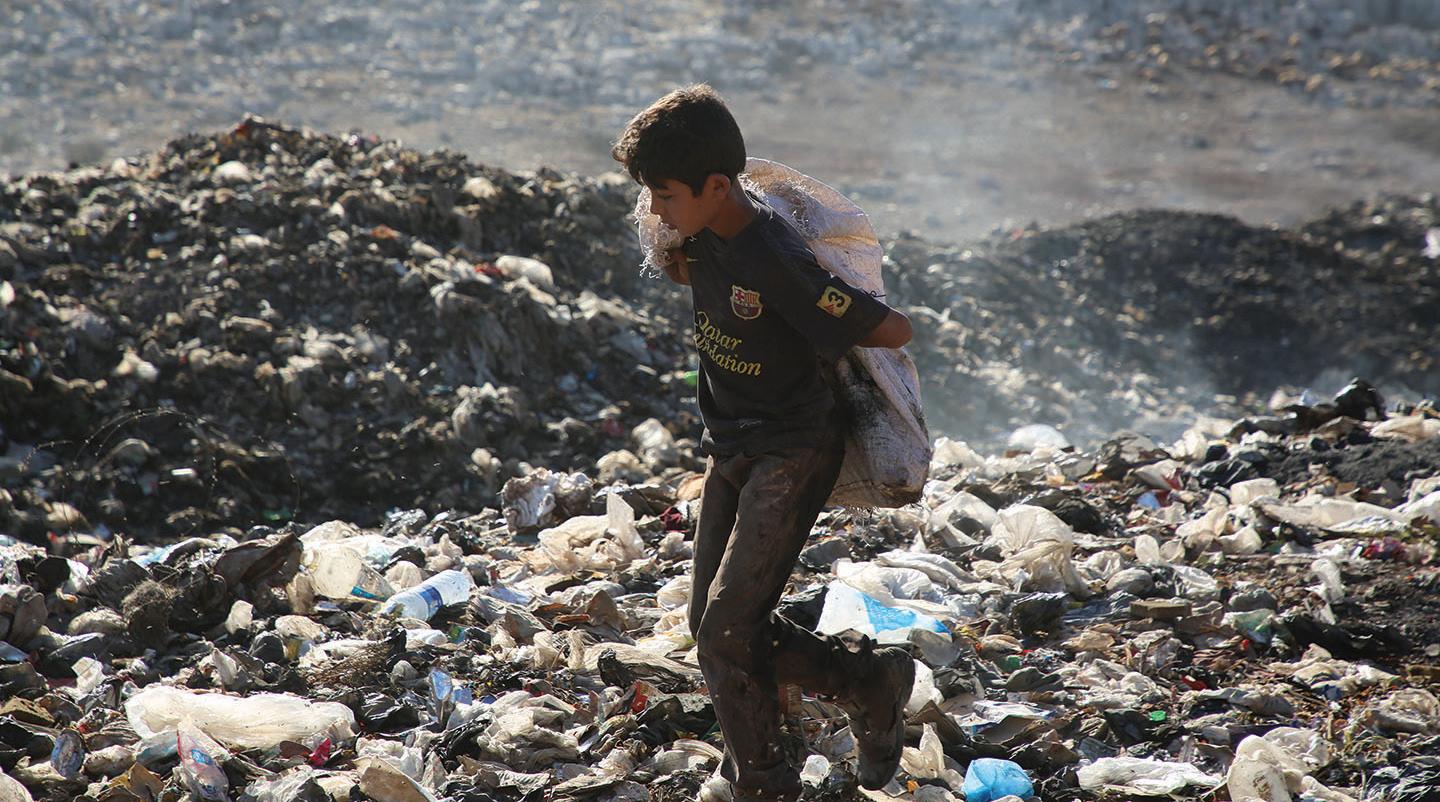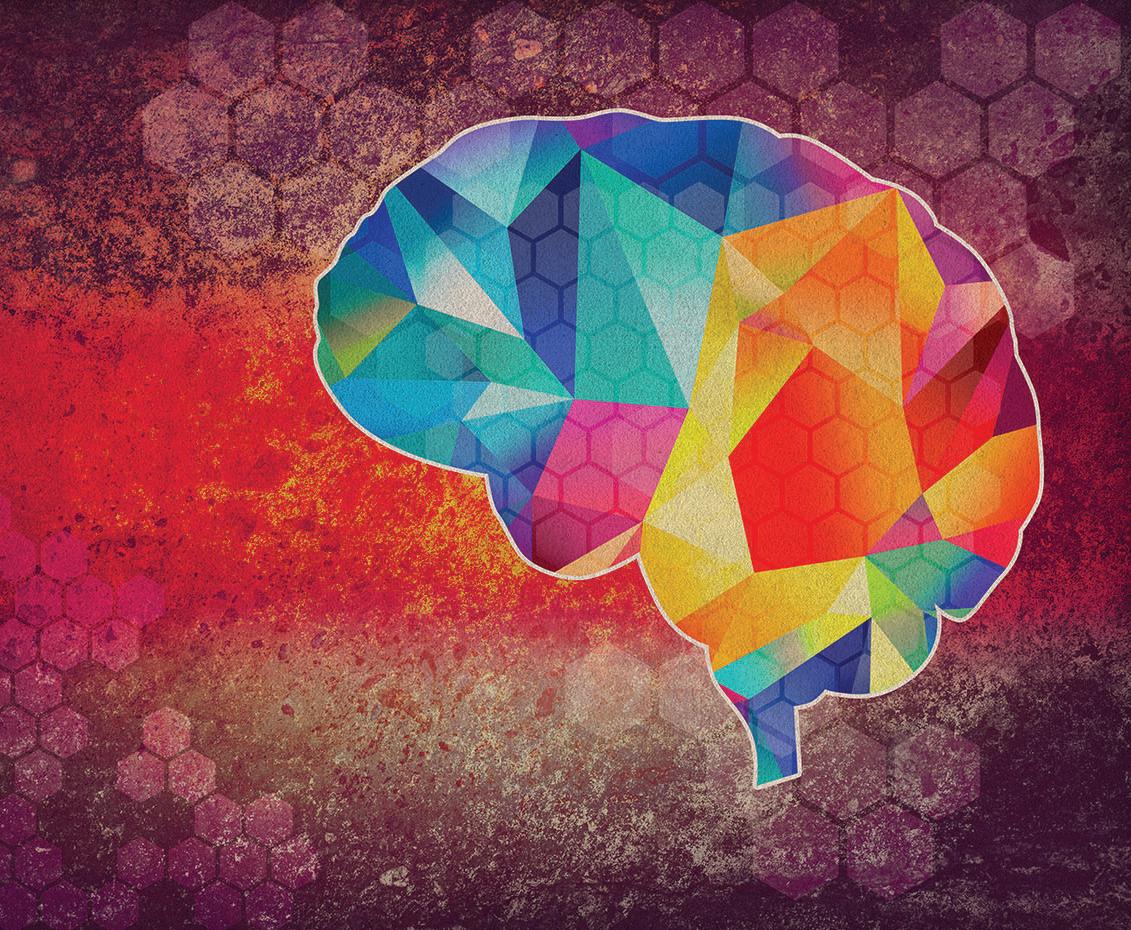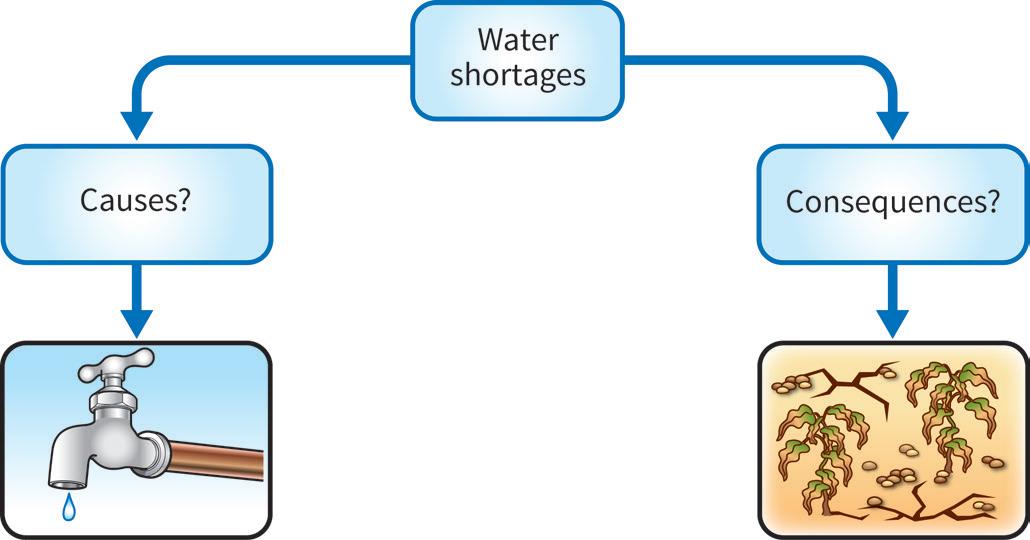
COURSEBOOK Second edition Digital Access Cambridge IGCSE™ and O Level
Perspectives Keely Laycock, Frances Nehme-Pearson & Fleur McLennan SAMPLE We are working with Cambridge Assessment International Education towards endorsement of this resource. Original material © Cambridge University Press & Assessment 2023. This material is not final and is subject to further changes prior to publication.
Global
SAMPLE We are working with Cambridge Assessment International Education towards endorsement of this resource. Original material © Cambridge University Press & Assessment 2023. This material is not final and is subject to further changes prior to publication.
Contents v Contents Introduction vii How to use this book xi 1 Getting started with Cambridge Global Perspectives 1 1.1 Thinking about different perspectives 3 1.2 Thinking about topics 7 1.3 Thinking about issues 10 1.4 Developing skills 12 2 Active learning 15 2.1 Memory and learning skills 16 2.2 The skill of reflection 28 2.3 Sharing ideas and working as a team 29 3 Analysis 34 3.1 Analysing issues and arguments 36 3.2 Analysing claims and evidence 41 3.3 Identifying and explaining facts, opinions, value judgements and predictions 44 3.4 Comparing different arguments and perspectives 49 3.5 Reaching a conclusion 54 4 Evaluation 60 4.1 Why we need evaluation skills 61 4.2 Evaluating perspectives and arguments 63 4.3 Recognising bias and vested interest 71 4.4 Evaluating credibility and reliability 74 4.5 Evaluating written sources 77 4.6 Considering the impact of the arguments / perspectives / credibility on your own perspective 79 SAMPLE We are working with Cambridge Assessment International Education towards endorsement of this resource. Original material © Cambridge University Press & Assessment 2023. This material is not final and is subject to further changes prior to publication.
vi CAMBRIDGE IGCSETM AND O LEVEL GLOBAL PERSPECTIVES: COURSEBOOK 5 Research 86 5.1 Choosing a topic, identifying an issue and formulating a research question 87 5.2 Planning your research 95 5.3 Finding relevant information 100 5.4 Conducting your research 106 5.5 Recording and organising your research 110 5.6 Writing a research report 117 6 Communication 123 6.1 Reading 124 6.2 Listening 128 6.3 Speaking 132 6.4 Presenting an argument 139 6.5 Writing 141 7 Collaboration 155 7.1 Working collaboratively 157 7.2 Planning a team project 163 7.3 Agreeing on an issue to work on together 166 7.4 Dividing up research and sharing findings 168 7.5 Deciding on a project aim and action 170 7.6 Explaining your project 172 8 Reflection 177 8.1 Reflective learning strategies 178 8.2 Reflecting objectively on different perspectives 186 8.3 Reflecting with empathy on others’ perspectives 188 8.4 Justifying your own perspective using evidence and reasoning 192 8.5 Reflecting with balance and empathy on your experience of working in a team 194 Glossary 202 Acknowledgements 206 SAMPLE We are working with Cambridge Assessment International Education towards endorsement of this resource. Original material © Cambridge University Press & Assessment 2023. This material is not final and is subject to further changes prior to publication.
This book is for all learners studying Cambridge IGCSE™ and O Level Global Perspectives, and anyone else who wants to develop their information skills, critical thinking, independent learning, collaboration and communication skills, using global topics and issues to practise these skills.
What is Cambridge IGCSE and O Level Global Perspectives?
Cambridge IGCSE and O Level Global Perspectives gives you the opportunity to think about significant global issues and to consider these from different angles, including personal, local, national and global perspectives. The active learning approach used in the course puts you at the centre of the learning and encourages you to think hard about how you learn, not just about what you learn. It will support you to make your own decisions independently and build your own understanding of the topics, issues and skills undertaken. Furthermore, you will develop responsibility for your own learning by considering, planning and accomplishing tasks and actions.
The focus of the course is on skills rather than content. Research, analysis, evaluation, communication, collaboration and reflection are the core skills that underpin the structure of the course. By developing your skills in constructing arguments, presenting views, working collaboratively, conducting research, and reasoning and reflecting on your place in a connected world, you will build on the core skills which support and enhance learning in other subjects. Since these skills are transferable and ongoing, they also prepare you for further study, future employment opportunities and lifelong learning.
What do you do in a Cambridge IGCSE and O Level Global Perspectives course?
In your lifetime, we will face some global challenges that do not have easy or quick solutions. These include how to best live sustainably, now and in the future, as well as coping with a rapidly changing world that will have an impact on your life chances and choices. Other challenges involve technology and how to navigate an increasingly connected and information-rich world, while also understanding more about yourself and how to gain a sense of your own active place in the world.
Cambridge IGCSE and O Level Global Perspectives focuses on skill development using some of the inspiring and engaging global topics and issues from the syllabus, although any topic or issue could be used to acquire and develop the skills. You will
vii
Introduction
SAMPLE We are working with Cambridge Assessment International Education towards endorsement of this resource. Original material © Cambridge University Press & Assessment 2023. This material is not final and is subject to further changes prior to publication.
demonstrate your learning by applying the skills – or the ‘how to learn’ – rather than by aquiring and presenting knowledge. Showing how learning is developing is undertaken in a different way from most curriculum areas. It involves building up your confidence and ability with the core skill and then applying it in a variety of ways. There are also opportunities to go deeper into topics and skills to follow your own personal interests.
Each chapter of this book focuses on a particular skill set that you will need to develop over the Cambridge IGCSE and O Level Global Perspectives course, including:
• researching, analysing and evaluating information
• developing and justifying a line of reasoning
• reflecting on processes and on own learning
• communicating information and reasoning
• collaborating to achieve a common outcome.
Our approach in Cambridge IGCSE and O Level Global Perspectives encourages you to be confident, responsible, reflective, innovative and engaged. This is achieved through serious consideration of the opinions, choices and decisions that you make. There is a strong focus on the use of classroom dialogue and questioning to help you develop higher order thinking skills and metacognition. Talking is one of the most effective ways to approach the course. Using discussions and asking challenging questions of yourself and those in the classroom can broaden understanding and engagement with the course. Learning how to consider others people’s opinions, choices and decisions creates successful learning conditions.
Why Cambridge IGCSE and O Level Global Perspectives matters
The Cambridge IGCSE and O Level Global Perspectives course has been developed to give you the opportunity to develop the skills you will need to meet the challenges of living in the twenty-first century. You will encounter the topics in new and empathetic ways, while steering away from replicating knowledge and retrieving content. The course begins with you understanding yourself and how you learn before moving on to look at understanding other people’s perspectives. Topics and learning concentrate on using empathy to understand multiple points of view. Choice and reasoning are also used to go deeper into the learning and to find a different path. The six core skills that are developed throughout the course will help you become active citizens of the future, making responsible choices for yourself, your community and the world.
The course encourages you to be more inquisitive about the world around you, become more self-directed in your learning, and use critical and creative thinking to find potential solutions to complex issues facing your own communities as well as those facing the planet.
Cambridge IGCSE and O Level Global Perspectives inspires you to engage with the uniqueness of your own local places and people, while also developing an understanding of your responsibility to the world.
viii CAMBRIDGE IGCSETM AND O LEVEL GLOBAL PERSPECTIVES: COURSEBOOK
SAMPLE We are working with Cambridge Assessment International Education towards endorsement of this resource. Original material © Cambridge University Press & Assessment 2023. This material is not final and is subject to further changes prior to publication.
Topics and how they should be explored
In your Cambridge IGCSE and O Level Global Perspectives course you will have the opportunity to think about and explore a wide variety of topics and apply the skills you learn to help you think more critically about the complexities of the modern world.
The six core skills are developed through the following topics:
• Arts in society
• Change in culture and communities
• Climate change, energy and resources
• Conflict and peace
• Development, trade and aid
• Digital world
• Education for all
• Employment
• Environment, pollution and conservation
• Globalisation
• Health and wellbeing
• Law and criminality
• Media and communication
• Migration and urbanisation
• Political power and action
• Poverty and inequality
• Social identity and inclusion
• Sport and recreation
• Technology, industry and innovation
• Transport, travel and tourism
• Values and beliefs
• Water, food and agriculture
There is no set curriculum or pathway for the topics to be taught. How and how many topics are explored are choices for your school and teachers to make. They will ensure that you explore topics with both short-term and long-term learning outcomes in mind. Topics are designed to engage and excite, so you can go further into each topic than the suggested activities and reading. Exploring the topics will build on your prior knowledge and abilities, with lots of opportunity to talk with peers and others from the community and listening to multiple perspectives. A variety of activities, such as group work and guided learning, helps build collaboration and communication skills, while individual activities encourage independence. There are lots of opportunities to support your learning with helpful tips, modelled responses, and reflections on your learning journey as you progress through the course.
Transferring skills
The skills that you will develop during this course can easily transfer to other curriculum areas. Communication skills are helpful for anyone who is also studying courses that need essay writing or presentation skills, such as English Language and Literature, Travel and Tourism or Enterprise. Similarly, the core skill of collaboration is not just for school but is a valuable skill for day-to-day interactions with people in the community.
Introduction ix
SAMPLE We are working with Cambridge Assessment International Education towards endorsement of this resource. Original material © Cambridge University Press & Assessment 2023. This material is not final and is subject to further changes prior to publication.
Analysis, research and evaluation are also the core skills of many other curriculum areas, giving you the opportunity to accelerate your learning. Cambridge IGCSE and O Level Global Perspectives can also help you to prepare for assessment points and examinations through its focus on your thinking and use of metacognition. The course encourages you to be reflective on your personal strengths, while also keeping in mind areas for improvement. This can streamline study time and make revision more focused on the areas that need improving.
Studying Cambridge IGCSE and O Level Global Perspectives will provide you with a strong foundation for further studies in AS and A Level Global Perspectives & Research as well as many other Cambridge International AS and A Level subjects. It also provides you with a strong starting point for further academic studies at university level.
x CAMBRIDGE IGCSETM AND O LEVEL GLOBAL PERSPECTIVES: COURSEBOOK
SAMPLE We are working with Cambridge Assessment International Education towards endorsement of this resource. Original material © Cambridge University Press & Assessment 2023. This material is not final and is subject to further changes prior to publication.
Chapter 1

LEARNING INTENTIONS

In this chapter you will:

•Understand what a perspective is
•Identify how people can have different perspectives


•Learn what is meant by a global, national, local or personal perspective
•Connect your interests to global topics

•Explore issues which are relevant to global topics
•Examine the skills you will develop as part of studying Cambridge Global Perspectives

Getting started with Cambridge Global Perspectives SAMPLE
•Begin a Cambridge Global Perspectives magazine or newsletter, which you can continue throughout the course.



We are working with Cambridge Assessment International Education towards endorsement of this resource. Original material © Cambridge University Press & Assessment 2023. This material is not final and is subject to further changes prior to publication.
Living in the twenty-first century, we are inhabitants of a world which is getting bigger and more diverse. As a result, we need to deal more than ever with complexity and understand different points of view about the world. Cambridge Global Perspectives is all about giving you the skills, attitudes and behaviours to respond to these challenges. In this chapter, you will learn about what we mean by perspectives, and think about why people might have different perspectives on the same issue, event or idea. You will also consider in more detail the key topics of global importance in the world today, and how they might relate to your own interests and to issues which are relevant to your own part of the world. Finally, you will think about the importance of skills and identify the main skills which you will develop as you study Cambridge Global Perspectives.
BEFORE YOU START
Before you start this chapter, take a few minutes to assess your experiences so far and the skills you already have. This will help you to identify what you know already and track your progress as you work your way through this book and the course. Make a copy of this table and use it to rate yourself:
KEY TERM
relevant: directly connected with, appropriate to.
I feel confident in myself to deal with the challenges that come from a complex and changing world.
I can work out the causes and consequences of important global problems and suggest ways to deal with them.
I can understand points of view which are not my own.
I can work independently and as part of a group.
I can see that people might have different opinions on the same thing.
I feel able to accept or reject pieces of information and justify why I have done so.
Do not worry if you have ticked ‘a little’ for anything as you will be learning to develop your skills and confidence in these areas as part of this course. Even if you have ticked ‘a lot’, you may well find that you have more to learn than you imagined.
2 CAMBRIDGE IGCSETM AND O LEVEL GLOBAL PERSPECTIVES: COURSEBOOK
A littleTo some extent A lot
SAMPLE We are working with Cambridge Assessment International Education towards endorsement of this resource. Original material © Cambridge University Press & Assessment 2023. This material is not final and is subject to further changes prior to publication.
1.1 Thinking about different perspectives
Realising that we might see things differently from others is key to understanding what a perspective is. Perspectives are based on personal experiences of the world and thinking about them. People see the world differently because experiences and ways of thinking differ.
KEY TERM
perspective: a viewpoint on an issue based on evidence and reasoning.



ACTIVITY 1.01
1 Imagine you are a passenger in a car that stops at some traffic lights. As you are waiting, a limousine pulls up at the lights. Who do you think is in the limousine?

2 Share your ideas with the class (you could write them on a whiteboard).
The chances are that other people’s ideas are different from yours: they see it from a different perspective.
3 1 Getting started with Cambridge Global Perspectives
Figure 1.1: A global perspective
Figure 1.2: Who do you think is in this limousine?
SAMPLE We are working with Cambridge Assessment International Education towards endorsement of this resource. Original material © Cambridge University Press & Assessment 2023. This material is not final and is subject to further changes prior to publication.
When you are thinking about perspectives, it is important to consider the terms that are used to discuss them. We can sometimes think that certain words mean the same thing to everyone. We are wrong to assume this, which is why it’s important to check meanings with others.
ACTIVITY 1.02
Here are three words. They are all topics / parts of topics in the Cambridge IGCSE and O Level Global Perspectives syllabus. What do they mean to you?
Write down a definition for each of the three words. Now share your definitions with a partner. Do they have the same ideas as you? Finally, look at the definitions for these words given in the glossary. Are they different from yours and your partner’s?
1 • globalisation
• values
• inequality
2 Now share your definitions with a partner. Do they have the same ideas as you?
ACTIVITY 1.03
You are going to carry out a survey with your class, so that you can all get to know each other a little more.
1 Think of a question that everyone could answer. For example, this could be ‘Which is your favourite subject at school?’ or ‘Where do you feel the happiest?’ Make sure it is a question you would be happy to answer. Be ready to share the question you have thought of.
2 Share your question with another person and feed back your questions as a pair to the rest of your class.
3 As a class, collect together everyone’s questions and decide which ones you would like to include in the class survey.
4 Write down the questions on a sheet of paper and ask your partner for their answers. Your partner will write down your answers.
5 In a group, compare all your answers and be ready to tell the class about your group. You might choose one reporter to speak for all of you, or you might choose to give your own answers.
6 Hold a class discussion about the similarities and differences in the people in your class. For example, some of you may have the same favourite colour, or school subject, or you may have different ones. Some of your most interesting similarities and differences might be your feelings about things, for example whether the same thing makes you feel happy.
KEY TERM
assume: to think something is true or is certain to happen, without checking if we are right.
4 CAMBRIDGE IGCSETM AND O LEVEL GLOBAL PERSPECTIVES: COURSEBOOK
SAMPLE We are working with Cambridge Assessment International Education towards endorsement of this resource. Original material © Cambridge University Press & Assessment 2023. This material is not final and is subject to further changes prior to publication.
As you have seen, you may feel differently and have different ideas and values (beliefs about what is good or correct) from other people. Understanding these differences helps us to understand what a perspective is. Our own personal perspective is based on what we have learned from others, what we have seen and done in our life and what our experiences have been. We also have different ideas because we have different influences. People see the world differently because they think in different ways. Our views are influenced by many people, including our parents, friends and people we admire.
Perspectives on behaviour
Different groups of people and different cultures have different ideas of what is polite behaviour and what is impolite behaviour. For example, in many European countries, it is considered polite to give a tip/gratuity in a restaurant, particularly if you received good service (often adding around 10% to the bill). In Japan or South Korea, however, offering a tip may be considered rude. In some countries, it is always impolite not to remove your shoes before entering someone’s house. However, in other countries, it is expected that you would ask the person whose house you were visiting whether you should take them off; or you might even just be expected to leave them on.
ACTIVITY 1.04
1 List at least two or three examples of behaviours which are considered to be polite in your own country, but rude in other countries; or behaviour which is thought to be rude in your country but polite elsewhere. If you are working in a group, share your examples and make a longer list.

2 Discuss why certain behaviour is considered to be good and other behaviour is considered to be bad.
a Are there different rules for children and adults?
b Are there different rules for children of different ages? Why is this so?
c Why might there be different rules depending on where in the world you live?
d Why do we have rules?
3 Create a document called ‘Rules of politeness’ which displays your findings.
Here is another example of how perspectives about everyday life can differ. Some people like eating meat and think it is ok to do so; other people prefer not to eat meat and may feel that other people should not eat it either. They may have strong views on the subject.
KEY TERM
values: moral principles / ideas / beliefs / feelings about what is morally correct, right, good or desirable.
1 Getting started with Cambridge Global Perspectives 5
Figure 1.3: Rules help us understand what we need to do
SAMPLE We are working with Cambridge Assessment International Education towards endorsement of this resource. Original material © Cambridge University Press & Assessment 2023. This material is not final and is subject to further changes prior to publication.
Why do you think people have these different perspectives about eating meat? Where might these ideas have come from?


Global, national, local and personal perspectives
In your work on this course you will explore and analyse global, national, local and personal perspectives on a range of global problems, or issues.
A global perspective is a view of the whole world / the planet. This view goes wider than you, your community and the country where you are living. Global issues, such as economic or social issues, are often in the news. A global issue or problem usually needs a global solution. It is not really possible to solve climate change with a local solution.
However, local courses of action might help towards a global solution. For example, a local course of action might be a poster campaign aimed at businesses, encouraging them to reduce the amount of fossil fuels they are using. This is because ‘every little helps’: if we all do something to change our behaviour, this can have big effects. Other global issues can also be local issues: poverty, for example. In these cases, it might be possible to do something locally. We might be able to take some action to help solve the problem of local poverty, even though we cannot do very much to help on a global scale.
KEY TERMS

global perspective: a perspective about the whole world, or planet Earth.
national perspective: a perspective about a particular country, or common to a whole country (these could be a view of the country given by one person, or a common view of many people in the country).
local perspective: perspective about a local area or the views of a local community.
personal perspective: someone’s own view about an issue, usually how it affects them personally.
issue: an important subject or problem for discussion.
economic: about money.
social: about people / society.

solution: a means of solving a problem or dealing with a difficult situation.
course of action: a plan or method used for achieving a specific aim or goal.


6 CAMBRIDGE IGCSETM AND O LEVEL GLOBAL PERSPECTIVES: COURSEBOOK
Figure 1.4: People may have different perspectives on whether we should eat meat
SAMPLE We are working with Cambridge Assessment International Education towards endorsement of this resource. Original material © Cambridge University Press & Assessment 2023. This material is not final and is subject to further changes prior to publication.
ACTIVITY 1.05
1 Look at Figure 1.5. It shows a diamond nine grid which ranks some of the global issues that the world is currently facing. The most important one from this person’s perspective is unemployment, which is at the top. Of equal importance underneath are population growth and disease. The issue this person thinks is the least important is at the bottom (crime).
Unemployment Population growth Disease
Lack of clean water Food poverty War Fuel shortages Migration Crime
2 Do you agree with the priorities in the diamond nine grid?
3 Consider which of these you think will be the most important for you over the next twenty years of your life. How might you change the grid (the order of priority, change of issues)?
4 Draw your own diamond nine grid with your own priorities in it.
5 Discuss with your partner the changes you have made to the diagram. Listen to your partner’s perspective. Do you have the same priorities? Why do you think this might be?
You may have a similar perspective and similar priorities as you have some things in common; you are probably the same age, you may have the same friends. You may have a similar family background. You will also have the same influences in school. If you did this activity with someone in a different country or a different type of school, you might find more differences.
1.2 Thinking about topics
In Cambridge IGCSE and O Level Global Perspectives you will not have to know lots of information about topics. Instead, you will research and explore some topics and you will read about, write about and discuss different topics. You will be using these topics to develop your skills and not to learn information for examinations.
1 Getting started with Cambridge Global Perspectives 7
Figure 1.5: Diamond nine grid ‘Prioritising global issues’
SAMPLE We are working with Cambridge Assessment International Education towards endorsement of this resource. Original material © Cambridge University Press & Assessment 2023. This material is not final and is subject to further changes prior to publication.
You will get the chance to choose topics you are interested in or topics that you do not know much about but you think you would be interested in learning more about.
ACTIVITY 1.06
1 Take a few minutes to think of three important world problems you have heard about, or that you know about. Write them down.
2 For each problem in your list, write down the answers to these questions. Be ready to share your ideas in a group:
a Why is this a problem?
b Are a lot of people affected by this problem?
c How do you know about the problem / where did you find out about it?
d Write down two details about the problem.
3 In your group, take it in turns to tell each other about the problems you thought of.
You may find that some of you came up with some of the same ideas.
4 As a team, design a poster that shows one or two of the problems you thought of and some interesting or important information about each problem. Your poster should be clear and well organised so that anyone looking at it can easily see your ideas.
a Decide together how you will organise everything on the poster –you might like to make a small rough draft on a piece of paper.
b When you have agreed, decide whether you are all going to put your own ideas on the poster or whether one or two of you should make the poster and put everyone’s ideas down on it for them.
c Make the poster and then display it for the rest of the class to see.
5 When everyone’s posters are ready, do a ‘gallery walk’: go round and look at the different posters and their ideas. Compare any similarities and differences.
6 Discuss this activity as a class. You should identify the different problems on each of the posters and discuss why these were chosen. You should also talk about the infor mation that has been provided about each problem on the posters. Is it useful? Could it be more detailed? Would this information be helpful to use in finding a solution to the problem? Finally, discuss how the information has been presented on each poster. Could this have been improved? Which poster is best at communicating the problem it has chosen?
As a student of Cambridge Global Perspectives you will explore a number of different topics as you learn and develop skills. Engaging with the topics will help you to improve these skills. You will also choose topics to focus
8 CAMBRIDGE IGCSETM AND O LEVEL GLOBAL PERSPECTIVES: COURSEBOOK
SAMPLE We are working with Cambridge Assessment International Education towards endorsement of this resource. Original material © Cambridge University Press & Assessment 2023. This material is not final and is subject to further changes prior to publication.
on when you do specific tasks, either on your own or as part of a group. This might involve finding the best match between what you are interested in and one of the topics. For example, if you are interested in the environment, then Climate change, energy and resources; Environment, pollution and conservation; or Water, food and agriculture might all be relevant. If you are interested in art you may choose ‘Arts in society’, and so on for other topics.
ACTIVITY 1.07
1 Review the list of Cambridge IGCSE and O Level Global Perspectives topics set out in the Introduction.


2 If you are working in a group, discuss what sorts of hobbies, subjects and topics you are interested in.
3 Select the six interests that are most popular in your group.
4 Compare your list of six interests with the list of Cambridge IGCSE and O Level Global Perspectives topics. Choose two or three topics which you think will cover your interests and write them down.
5 As a group, discuss how you could let the rest of the class know the topics you have chosen and the interests that were linked to them. You can make a poster, or you can choose one or two people to be spokespeople to tell the rest of the class about your group’s interests and ideas. Or you can choose any other way to tell the class.
6 Share your thoughts with the class.
7 Take a class vote on which topics you like best.
1 Getting started with Cambridge Global Perspectives 9
SAMPLE We are working with Cambridge Assessment International Education towards endorsement of this resource. Original material © Cambridge University Press & Assessment 2023. This material is not final and is subject to further changes prior to publication.
Figure 1.6: Arts in society is one of the topics you can explore
1.3 Thinking about issues


You will have noticed that the Cambridge IGCSE™ and O Level Global Perspectives topics are very broad headings. ‘Health and wellbeing’, for example, can cover a lot of different possibilities! This means that you will need to narrow them down to identify the specific problem or point of disagreement you are interested in within the overall topic. In Cambridge Global Perspectives, we call these problems or subjects that people disagree about ‘issues’.Issues can cause difficulties for people, or disagreements or even conflicts between different groups or countries. For example, inequality is a global issue. In Activity 1.07, you matched up things you were interested in with Cambridge IGCSE™ and O Level Global Perspectives topics. To do this, you needed to match the topics with your interests by breaking down each one to look for points of similarity between them.
ACTIVITY 1.08

With a partner:
1 Look at the posters you created for Activity 1.06 to remind yourselves about them.
2 Choose any one of the posters; it can be a poster created by a different group.
3 Make a note of the world problems on the poster you have chosen.
4 Are there any links between the topics and the problems?


10 CAMBRIDGE IGCSETM AND O LEVEL GLOBAL PERSPECTIVES: COURSEBOOK 10
Figure 1.7: Inequality is a global issue
SAMPLE We are working with Cambridge Assessment International Education towards endorsement of this resource. Original material © Cambridge University Press & Assessment 2023. This material is not final and is subject to further changes prior to publication.
CONTINUED
5 Take a piece of paper and write both your names at the top.



a If you can see a topic that links to some of the problems on the poster, write it down on your piece of paper with the title: Topic.
b Below it, write ‘Issues’ as a heading and list three problems that link to the topic, like this:







 Jack and Jill
Jack and Jill
Topic: Health and wellbeing
Issues: Vaccination
Childhood diseases
Exercise
6 Now exchange your paper with another pair.
7 Look at what they have written and add any more ideas from any of the other posters.
8 Exchange with a different pair and do the same thing.
9 Then return the paper you have to the people whose names are at the top.
10 When you get your paper back, take a look at what has been added and see if you agree with it.
When you are reading about an issue that people disagree on, you should try to find out what different people think about the issue and why they have different ideas. In other words, you should identify different people’s perspectives. When you have heard, or read, both sides of the story you can make up your own mind about what you think. You might agree with one or the other perspective, or you might think both perspectives are understandable but not really agree completely with either one.

1 Getting started with Cambridge Global Perspectives 11
SAMPLE We are working with Cambridge Assessment International Education towards endorsement of this resource. Original material © Cambridge University Press & Assessment 2023. This material is not final and is subject to further changes prior to publication.
Figure 1.8: Working together improves learning outcomes
1.4 Developing skills
The Cambridge IGCSE™ and O Level Global Perspectives course is all about developing skills that will be useful in your education, work and life repeated below.
KEY TERMS
analysis: studying or examining the parts of something, or the details, to understand it better.
collaboration: working together with others in a supportive and effective way.
communication: sharing ideas, feelings or information with others by speaking, in writing or in any other way.
Look at Figure 1.9. Some of the words might be new or unfamiliar. Look at the key terms for an explanation of each skill. You have probably practised these skills in your own life, without thinking about it. This course will help you to develop the skills and make you more aware of your own skills and how you can use them.
ACTIVITY 1.09
Reflect on (think about) the course so far and the activities you have done.
1 In your group, divide up the Cambridge Global Perspectives skills. Each one of you should think about one skill. Write the name of your skill on a piece of paper.
2 Think about the activities you have done that can relate to that skill –if you feel you have not done any related activities, has anyone else in the class done any? One of your classmates, the teacher? If you are not sure, discuss with a partner. Write down the activities on your skill paper. You can list them or write them in around the skill name.
3 Share what you have written with the rest of your group. Do they have any other ideas?
4 Listen to the others’ ideas and suggest any others you can think of.
5 As a group, join another group and compare your skills papers.
evaluation: working out if something is useful, valuable, effective, by looking at its good points and its bad points, or its strengths and weaknesses.
reflection: thinking deeply. This could be about something that has happened, something you have learned, or how to get your own ideas and feelings clear in your own mind.
research: the systematic study of a global issue to find evidence and develop understanding.

12 CAMBRIDGE IGCSETM AND O LEVEL GLOBAL PERSPECTIVES: COURSEBOOK
Cambridge Global Perspectives skills
Research Reflection Communication
Evaluation
Analysis Collaboration
Figure 1.9: Cambridge Global Perspectives skills
SAMPLE We are working with Cambridge Assessment International Education towards endorsement of this resource. Original material © Cambridge University Press & Assessment 2023. This material is not final and is subject to further changes prior to publication.
REFLECTION
Look back at your self-evaluation at the beginning of the chapter. Do any of the ratings need to change? Is there anything you would like to add that you feel you understand better?
SHOWCASING YOUR SKILLS
Cambridge Global Perspectives

Your class is going to start its own Cambridge Global Perspectives magazine or newsletter.
Take a few moments to think about any newsletters or magazines you have seen. How would you describe a magazine to someone who had never seen one? Note down three elements you might find in a magazine or newsletter.
Share your ideas with others in your class. Which of these ideas do you think you could include in your class magazine or newsletter? You will now need to make sure you include the different parts that a newsletter or magazine will need. What is the most important story about global perspectives which you want to headline on, or make your cover story? What sections will your publication have? And who will be responsible for each section, or for writing the headlines?
Your first edition will be a general introduction to Cambridge Global Perspectives and to your classmates. Everyone in the class will be involved.

You can add new editions later in the course, with contributions from the class on different experiences of your course, class and the topics and issues you cover during the course.
Reflection on your showcase
Write a few lines describing what went well.
Was the first draft of the magazine / newsletter successful? How do you know?
What was difficult?
How could you improve things for next time?
Did you enjoy preparing the magazine?
Did this activity help you to think about what you had learned in Chapter 1?
1 Getting started with Cambridge Global Perspectives 13
SAMPLE We are working with Cambridge Assessment International Education towards endorsement of this resource. Original material © Cambridge University Press & Assessment 2023. This material is not final and is subject to further changes prior to publication.
SUMMARY
In Chapter 1 you have been thinking about Cambridge Global Perspectives and practising pair work and group work.
You have considered different people’s perspectives and thought about global, national, local and personal perspectives.
You have looked at some topics that you will be examining and skills you will be developing during the course. You have considered world problems and issues you know about.
You have collaborated with others and discussed how activities can develop the skills and you have been involved in starting a Cambridge Global Perspectives magazine or newsletter.






REVIEW AND REFLECTION
I have learned about … I need more practice with … Perspectives, including global, national, local and personal perspectives
Topics and issues
Skills developed in Cambridge Global Perspectives
CAMBRIDGE IGCSETM AND O LEVEL GLOBAL PERSPECTIVES: COURSEBOOK 14
SAMPLE We are working with Cambridge Assessment International Education towards endorsement of this resource. Original material © Cambridge University Press & Assessment 2023. This material is not final and is subject to further changes prior to publication.
LEARNING INTENTIONS
In this chapter you will:
•Understand how your brain works when remembering information
•Use specific techniques to help you remember what you have done, seen and heard and to manage information

•Understand how using metacognition will help you learn

•Develop techniques to learn effectively and strategies to stay focused on tasks
•Understand why reflection is important for learning

•Share some ideas with your colleagues and listen carefully to others’ ideas
•Work with others to carry out a small piece of teamwork.

Chapter 2 Active learning SAMPLE
We are working with Cambridge Assessment International Education towards endorsement of this resource. Original material © Cambridge University Press & Assessment 2023. This material is not final and is subject to further changes prior to publication.
In this chapter, you will start by learning about how your brain works. This will help you to explore a number of different ways in which you can improve your memory in general, as well as choosing the best method to stay focused on your work. Because the brain works by making and storing connections, you can support your memory by using effective strategies to connect with your learning, and this chapter explores a range of techniques for doing this. After that, it discusses reflection, specifically how to reflect on your learning. Finally, you will consider how you can learn effectively from other people and the different ways in which this happens as you work as a team.

This chapter uses examples from the topics of Migration and urbanisation, Climate change, energy and resources, Environment, pollution and conservation, Employment, and Globalisation to explore and develop skills of active learning.
BEFORE YOU START
Before you start work on this chapter, take a few minutes to think about the things you do independently now and how you learned to do them. How do you remember important things? Write down your ideas.
2.1 Memory and learning skills

In this section, we will learn about how the memory works and how we can improve our memory and learn more easily by using organisational tools and metacognition strategies. We need to use memory effectively in order to store information and skills. Scientists are now beginning to recognise that anyone can learn at any time in their life. To allow you to do that, you may need to change the way you do things so that you can remember better.
REFLECTION
Think about how you have learned to do things in your everyday life.
• Do you have a good memory?
• Do you remember some types of information easily but find others more difficult to remember?
• What sorts of things do you find easy to remember?
• How do you remember specific information, for example tests and exams, or directions to a specific place?
Discuss your thoughts with a partner.
KEY TERM
metacognition: thinking about learning more explicitly, often by selecting a suitable strategy for planning, monitoring or evaluation of learning.
16 CAMBRIDGE IGCSETM AND O LEVEL GLOBAL PERSPECTIVES: COURSEBOOK
SAMPLE
Cambridge
International Education
endorsement
Original material © Cambridge University Press & Assessment 2023. This material is not final and is subject to further changes prior to publication.
We are working with
Assessment
towards
of this resource.
How our brain works
Our brain helps us to take in important information and remember it for future use. The brain works as a filter, keeping important information and experiences in our long-term memory for us to access later. It filters out things that are not so important. This often happens without us noticing.

The brain puts everything into our short-term memory first and then filters what we hear and see so we can concentrate on what is important. This means that we can listen to one person when there are other people talking. But we can be distracted by a sudden loud noise. The brain also filters what we see so that we notice the things that are important for our survival.
If we want to remember information and experiences, we have to make sure the brain keeps them stored for us. An example of this is learning the alphabet, or the multiplication tables. Our long-term memory helps us to build on our learning from before, without having to start at the beginning. To help us to do this, we can use a range of strategies and techniques to ensure that the information we need can be accessed easily when we need it.
The more we learn, the better we get at learning. It is a bit like exercise; the more we do, the fitter we get. Changing the way you do things, including how you learn, is what this section on memory is about.
2 Active learning 17
SAMPLE We are working with Cambridge Assessment International Education towards endorsement of this resource. Original material © Cambridge University Press & Assessment 2023. This material is not final and is subject to further changes prior to publication.
Figure 2.1: The wonderful human brain
Making connections
All our knowledge is connected together like a spider’s web. Learning new concepts and ideas happens easily when we already have some knowledge about what we are learning. However, we find learning harder when we have fewer connections to the subject we are trying to learn. Making connections not only helps us to learn but also helps us to remember the information we have learned so we can use it again in the future. Making these connections with our learning takes time and practice, just like learning to play a sport. In physical activities, we build up skills that help us to be better at future physical activities. Sometimes we need to connect what we are doing to things we have done before and use our knowledge or skills to help us to do new things. The same is true of new ideas. When we learn something new, we need to make connections; we link ideas and information together, or we link to things we already know in a different way that increases our ability to make new connections. We need to associate new ideas and information with each other and with the ones we already have.
ACTIVITY 2.01
Look at the diagram below. Copy out the diagram and add your own connections or associations. As a challenge, why not try creating a real life version of this diagram by finding connections between other learners. For example you could try finding connections between birthdays or try something harder like foods people like/dislike or hobbies.
Mind-maps
One good way to link ideas and record connections is to use a mind-map. Mind-maps organise information visually around a single idea or issue. Brief and clear supporting points, words or examples are written down and linked to the key issue using lines to show the connection, sometimes emphasising the most important supporting information.
Mind-maps are a useful tool to use when there is a lot of information to consider or when the links between ideas are hard to see. Mind-maps allow these supporting ideas
18 CAMBRIDGE IGCSETM AND O LEVEL GLOBAL PERSPECTIVES: COURSEBOOK
Good personal health Exercise Diet Sleep Plenty of fruit
Figure 2.2: Making connections
SAMPLE We are working with Cambridge Assessment International Education towards endorsement of this resource. Original material © Cambridge University Press & Assessment 2023. This material is not final and is subject to further changes prior to publication.
to link to each other and can use colours and pictures to show connections to the central theme or issue, as in Figure 2.3.

Advantages
• Mind-maps can use words and images and are often colourful.
• Mind-maps help you to record what you already know about a topic or issue, and allow you to connect prior learning to new learning.
• Mind-maps allow you to add words and images connected to the key idea or issue, or any branches off that key idea or issue.
Spidergrams
A spider diagram or spidergram is a form of mind-map which uses lines and circles to make connections (Figure 2.4). It is particularly helpful for organising information into different topics.
A spidergram starts with a central idea and branches out. You should use a whole sheet of A4 paper and put the main idea in the centre. You can then draw branches pointing outwards. You should use one branch per point. By adding smaller branches, you can add detail and examples. This is a useful tool to use when planning writing as the supporting information you include on the branches can show you if your ideas group together in a logical way, and whether your points have enough supporting detail or examples.
KEY TERM
logical: sensible and reasonable.
2 Active learning 19
Figure 2.3: Example of a mind-map
Sub idea Sub idea Sub idea Sub idea Sub idea Idea Idea Idea Idea Central topic
Figure 2.4: Example of a spidergram
SAMPLE We are working with Cambridge Assessment International Education towards endorsement of this resource. Original material © Cambridge University Press & Assessment 2023. This material is not final and is subject to further changes prior to publication.
We are working with Cambridge Assessment International Education towards endorsement of this resource.

Advantages
• All your notes are on one page, so you are less likely to write irrelevant information.
• You can see the main points straightaway.
• You can connect key points and ideas, which is good for structuring a report or essay.
• You can clearly see where there are gaps where you need to do more research.
ACTIVITY 2.02
Explore the use of spidergrams by putting the word ‘spidergrams’ into your search engine. Save or print two examples that you think might help you use this technique in the future.
ACTIVITY 2.03
Read this text on the global topic of Employment, then do the activity below.
Getting paid for working in a job is one of the best ways to get out of poverty. Good jobs play a vital role in giving people a sense of wellbeing and confidence. Having a job makes a person feel as if they are making a contribution to their family and their community. However, unemployment is rising across the world and is becoming a serious global issue. There have already been protests and uprisings in places like Brazil and Greece because people are not able to earn a living to feed themselves or their families. Another effect of unemployment is the increased population within towns and cities as people move from the countryside to where the work is. Overpopulation leads to overcrowding and poor-quality housing in many large cities. Poorly heated or damp housing can cause serious health issues, resulting in illnesses such as pneumonia. Another serious consequence of overcrowding is rising crime, as poor living conditions can lead some people to make desperate choices and break the law.
‘The more people are employed, the better the living standards and the healthier and happier the community’, states Henry Gold from the World Bank.
Produce a spidergram of the key points. You do not need to record everything in your diagram. You might find it easier to write some headings after reading the text once, for example:
• benefits of a job
• effects of unemployment
• consequences of rural unemployment
• consequences of overpopulated towns.
20 CAMBRIDGE IGCSETM AND O LEVEL GLOBAL PERSPECTIVES: COURSEBOOK
SAMPLE
Original material © Cambridge University Press & Assessment 2023. This material is not final and is subject to further changes prior to publication.
Organising information
You will remember more if you are organised. Our brains like order and can make connections more quickly if the information it is given is organised. It is why planning is an essential skill for the Cambridge IGCSE™ and O Level Global Perspectives course. An example of organising would be that this text book is set out with chapters, sections and headings so that you can easily follow the flow of information and your brain will understand it more quickly and remember it better.
ACTIVITY 2.04
Look at the lists below. Who do you think might have written them? Why did they write them and how will they use these lists?
1 kilo rice
2 kilo onions
Garlic
Tomatoes
Oil
Flour
Chocolate
On my way home: Pick up Jack & Nabil from school
Post parcel Drop Jack off at the swimming pool
Collect books from Rekha before 5
Write down your thoughts and share them with a partner.
Timelines
Homework
Geog – revise chapter 6 – open book test Mon. Maths – worksheet finding the median, 1st 10.
Eng – Read passage page 27 and answer Q 1–4.
Timelines are a useful way of organising notes to make sense of when things happen.
In Figure 2.5, the timeline shows some of the significant events to do with plastic production and pollution from 1839 to 2021.
Natural Rubber Method of processing invented by Charles Goodyear
High-density Polyethylene (HDPE)
Invented by Paul Hogan and Robert Banks
Polypropylene (PP)
Also invented by Paul Hogan and Robert Banks
Polystyrene (PS)
Discovered by Eduard Simon
Polyethylene Terephthalate (PET)
Invented by Whinfield and Dickson
Parkesine Invented by Alexander Parkes
Acrylic Poly Methyl Methacrylate
Invented by Hill and Crawford
Polyvinyl Chloride (PVC)



First created by Eugen Baumann
Low-density Polyethylene (LDPE)
Invented by Reginald Gibson and Eric Fawcett
Vinyl or PVC
Plasticised PVC invented by Waldo Semon
Styrofoam
Invented by Ray McIntire for Dow Chemical
Plastic Pollution
First observed in the ocean. First plastic bag off the coast of Ireland.
1997
Garbage Patch Great Pacific Garbage Patch discovered by Charles Moore 1960
Actions to Mitigate Global Plastic Standards, Regulations, Protests and NGOs fight to reduce plastic
2 Active learning 21
1941
1951
1951
1839
1941
1839
1936
1856
1935
1872
2021
1926
SAMPLE We are working with Cambridge Assessment International Education towards endorsement of this resource. Original material © Cambridge University Press & Assessment 2023. This material is not final and is subject to further changes prior to publication.
Figure 2.5: Timeline of plastic production and pollution, 1839–2021
Advantages
• A timeline gives you a visual image of a series of important events in date order.
• You can use a timeline to make notes about an issue and how it happened, for example the spread of COVID-19 in 2020. Search for ‘COVID-19 pandemic timeline’ to see some examples.
• You can easily add events to a timeline, so they are useful for planning projects.
Flow charts
A flow chart is a diagram that can be used to represent a process. The steps are shown in boxes and are connected with arrows, as shown in Figure 2.6.
Advantages
• Flow charts help you to gain an idea of the steps you need to take to complete something, for example a research task or a project.
• You can easily add in information as you think of further steps in the process.
Planning
Organising information is often followed by consolidating it and turning it into your own piece of work, for example a written report or essay, a visual presentation, or a basis for a course of action. When completing any piece of work, you should get into the habit of following the steps shown in Figure 2.7.
22 CAMBRIDGE IGCSETM AND O LEVEL GLOBAL PERSPECTIVES: COURSEBOOK
Television doesn’t work Plug in television No No Yes Yes Replace fuse Repair television Television plugged in? Fuse blown?
Figure 2.6: Example of a flow chart
Plan Review Do Evaluate
SAMPLE We are working with Cambridge Assessment International Education towards endorsement of this resource. Original material © Cambridge University Press & Assessment 2023. This material is not final and is subject to further changes prior to publication.
Figure 2.7: Steps for completing a piece of work
Planning is a skill you will use throughout your life. It requires practice, as do all the skills within this book.
When creating a plan, you should always try to create a SMART plan. SMART stands for:
Specific
Measurable
Achievable
Relevant
Timely
You should be able to answer the following questions to create a SMART plan:
1 Specific – What are you trying to achieve? How are you going to achieve it?
2 Measurable – How will you assess whether you have achieved what you set out to achieve? How will you know when you have finished it?
3 Achievable – Do you have the skills and resources to achieve your aim? If not, can you access them?
4 Relevant – Is this what is required? Will it match requirements?
5 Timely – What is your time frame? Can you achieve this in the time? (If not, you will need to change the time frame or your plan.)
ACTIVITY 2.05
Consider the following long-term goal: To cook a special meal for a family member’s birthday.
1 Identify four short-term goals to reach your long-term goal.
2 Discuss your short-term goals with a partner. Do they have the same ideas as you?
Short-term goals might include: find or ask someone for a recipe, buy the ingredients, set a date and time, enlist a friend to help.
3 Write a reflection: Why is it so useful to break down your plan into smaller short-term goals? Could you use this technique for your longer-term life goals? Think of some examples.
Using metacognition
In order to be more effective in our learning, we can consciously decide how we plan, monitor or evaluate our learning. This is called metacognition. When we use metacognition, we are making important decisions about how we use this stored information to learn. Being aware of what strategies and tools are useful to the task helps you to learn more effectively, as you will be able to manage lots of information and evaluate what is important and what is not.
KEY TERM
SMART plan: a plan that is specific, measurable, achievable, relevant and timely.
KEY TERM
evaluate: to identify / assess the strengths and weaknesses of something.
2 Active learning 23
SAMPLE We are working with Cambridge Assessment International Education towards endorsement of this resource. Original material © Cambridge University Press & Assessment 2023. This material is not final and is subject to further changes prior to publication.
ACTIVITY 2.06
Think about things you can do, either well or badly, or subjects you know a lot about.
Create a table like the one below. In the left-hand Activity column, make a short list of these things. These can be everyday activities you do, sports, games you play, hobbies, skills you have learned such as reading and writing, knowledge you have about hobbies, your interests or your studies.
ActivityCould I do it without practice?
How long I have spent doing it?
What did / would I do to improve my skill?
Now look at your list of the things you do well: did you have to practise them before you became good at them? Did you know how to do them perfectly the first time? How much time have you spent doing them? What skills did you already have that helped you to learn to sing, play a musical instrument, play sports, hobbies or games? If you haven’t ever learned to play an instrument, do you think it would take a long time to play well? Make notes in your table.
With a partner, share your thoughts and experiences and then decide between you: is it possible to learn something new without practising? Find some examples to support your answer to this question.
Techniques to help your learning
Pictures and images help us to remember things for longer. This is because they often connect to something we already know and can compress complex ideas into something simpler that sticks in our minds. Try drawing little pictures or cartoons, or look online for pictures, to help you remember key ideas and issues (Figure 2.8).
24 CAMBRIDGE IGCSETM AND O LEVEL GLOBAL PERSPECTIVES: COURSEBOOK
SAMPLE We are working with Cambridge Assessment International Education towards endorsement of this resource. Original material © Cambridge University Press & Assessment 2023. This material is not final and is subject to further changes prior to publication.
ACTIVITY 2.07

1 Search the internet to find an image to help you remember how the brain makes connections.

2 Find an image that sums up an issue to do with the Cambridge IGCSE™ and O Level Global Perspectives topic of Migration and urbanisation.Consider these questions:
a What issues does the picture represent?
b If you see this picture in the future, will you remember the issue(s)?
2 Active learning 25
Figure 2.8: Drawing pictures can help you remember details
SAMPLE We are working with Cambridge Assessment International Education towards endorsement of this resource. Original material © Cambridge University Press & Assessment 2023. This material is not final and is subject to further changes prior to publication.
3 When looking at Figure 2.9, what issue(s) do you think of?
When looking at Figure 2.9, it is likely that you thought of burning fossil fuels and how the world’s use of resources, especially energy, causes climate change. You might also have considered the globalisation of humanity’s energy needs and the global impact they have. The impact of pollution on the environment through industrial activity is also something this picture might get you thinking about. All of these are relevant global issues to consider when studying Cambridge Global Perspectives and are linked to the Cambridge IGCSE™ and O Level Global Perspectives topics. Another idea to help you learn is to simplify information into an acronym to help you remember key features or ideas. For example, to remind yourself what to edit in your writing you might use the acronym ‘GAPS’:

G grammar
A accurate punctuation
P paragraphs
S spelling
KEY TERMS
globalisation: the development of close connections between all (or most) of the countries in the world, building closer economic, cultural, and political relations between them. This is happening because communication and travel are easier now.
acronym: an abbreviation formed from the initial letters of other words and pronounced as a word.
26 CAMBRIDGE IGCSETM AND O LEVEL GLOBAL PERSPECTIVES: COURSEBOOK
CONTINUED
Figure 2.9: A city skyline
We are working with Cambridge Assessment International Education towards endorsement of this resource. Original material © Cambridge University Press & Assessment 2023. This material is not final and is subject to further changes prior to publication.
SAMPLE
Keeping focused
When learning, it is important to focus on the task in hand. This gives your brain time to move what you are learning from your short-term memory, where it might be forgotten, into your long-term memory so that you can remember it. Multi-tasking can prevent you from doing this.
Spending longer at your computer will not help you remember more. Even an adult can only concentrate for a maximum of fifteen to twenty minutes at any one time, so have a break when you need to. Getting up and doing something different for a couple of minutes will help you to refocus when you return to your work. Physical activity not only helps keep your body fit but also helps keep your brain fit and aids memory.
The Pomodoro technique is a popular method for keeping focused on one task at a time; it helps you stay focused by prompting you to take breaks when you need to. It uses a timer to measure out intervals of work on one task (usually lasting about twenty minutes) with breaks of five minutes built in between intervals. The breaks are designed to make it easier to return to single-minded attention on the task. This technique was invented by Francesco Cirillo in the late 1980s who used a kitchen timer in the shape of a tomato (‘pomodoro’ means tomato in Italian). Today, you can either use a mechanical or electronic timer, or there are many phone and computer apps available which provide a Pomodoro timer.
REFLECTION
Think about the different methods for improving your memory and learning that we have looked at in this section. Do you know any other methods that would be helpful? Which of these methods do you think will help you personally in the future?
KEY TERM
Pomodoro technique: a method for timing work in set intervals with built-in breaks.

2 Active learning 27
Figure 2.10: Acronyms simplify information and help us to remember
SAMPLE We are working with Cambridge Assessment International Education towards endorsement of this resource. Original material © Cambridge University Press & Assessment 2023. This material is not final and is subject to further changes prior to publication.
2.2 The skill of reflection
Reflection means thinking about something in depth. We can reflect on things we are going to do, to prepare or plan, or we can reflect on things after they have happened. Reflection is a key part of metacognition.
Reflection is helpful in learning because it helps us to remember and learn from our experiences or our studies. Sometimes we need to reflect on things to understand them better.
Reflection is one of the skills you will learn and practise in Cambridge Global Perspectives:
• When responding to written questions, you will need to use your reflection skills and also be prepared to give your own view.
• When working on an individual report, you will reflect on your research findings and the different perspectives you have explored; you will give your own perspective on the issue you have researched, explaining how your perspective has been affected by your research.
• After you have completed a team project, you will reflect on your experiences, what you found out and how the project went – the successes and struggles.
Throughout this book, you will be given opportunities to think about your own ideas and beliefs and learning.
REFLECTION
Think about reflection. In your daily life, when do you find yourself reflecting on what has happened in your life or things you have done? Why do you do this?
Is it because you want to relive moments you enjoyed? Do you think of how things could have been different and how you could have changed them?
Share your thoughts with your partner. Does your partner reflect on the same things? Do they reflect in the same way? Do you both spend time reflecting?
Reflection for learning
Ask yourself the following question: Am I already a reflective learner?
If the answer is yes, then well done, but keep reading as you can always get better at reflection. If the answer is no, then don’t worry. This section gives you some activities and tips to help you on your way to becoming a more reflective learner. Being able to reflect will improve your learning, so you need to find time to do it. Reflecting on the learning you do in the classroom can help you identify areas that you could improve on. It can also help you to think of next steps and plan different ways of doing an activity or project. You might say that you are always thinking anyway, but it is not enough just to think; you have to communicate your thoughts to someone else.
So, although reflection itself is an independent activity, you will improve your learning if you share your reflections, either in written or spoken form. The easiest option is to write down your reflections. You can keep a diary, keeping your thoughts private, or write a blog and share your thoughts with others.
28 CAMBRIDGE IGCSETM AND O LEVEL GLOBAL PERSPECTIVES: COURSEBOOK
SAMPLE We are working with Cambridge Assessment International Education towards endorsement of this resource. Original material © Cambridge University Press & Assessment 2023. This material is not final and is subject to further changes prior to publication.
Thinking about the reflection tasks you’ve already completed, you’ll notice that you reflected on what you already knew, looking back to the past and making connections to your prior knowledge. In Activity 2.01, you were able to add your thoughts to the ‘Making connections’ diagram in Figure 2.2, showing your knowledge. Then in Activity 2.06 you reflected on things you can do and what you need to do to improve, using metacognition. So you can reflect looking back: thinking about what has happened or what you have done. Or you can reflect looking ahead: planning or thinking about what you want to do or are hoping to do.
When you use a strategy such as mind-mapping, timelines or flow charts, you have to select what you want to write down. You reflect to select. Then you need to use the information given carefully: read it and reflect on it, then decide what is important and can be used.
When you want to revise material for other subjects, these strategies will help you to think back to what you have learned, or to the advice your teacher has given you.

REFLECTION
Think about: What learning strategies help you to remember what you have learned? Note down your thoughts.
2.3 Sharing ideas and working as a team
Think about sharing ideas: Why is it important to share our ideas when we work or play with other people? What happens if we do not share ideas?
If we share ideas when we are with other people, they know what we are thinking and can take our feelings or ideas into consideration. If we do not tell people what we think, they have no way of understanding us. It is easier to work with other people if we cooperate and work as a team. This includes sharing our own knowledge and ideas. There may be more than one possible way of doing something; sharing different ideas helps us to come up with the best solution.
DISCUSSION
With a partner, discuss how reflecting in this way helps you to learn and how it links to what you have learned about memory skills.
2 Active learning 29
Figure 2.11: Am I already a reflective learner?
SAMPLE We are working with Cambridge Assessment International Education towards endorsement of this resource. Original material © Cambridge University Press & Assessment 2023. This material is not final and is subject to further changes prior to publication.
Sharing our own ideas and discussing them with others can make them clearer to us. Sometimes saying our ideas out loud helps us to see them clearly. Discussing and sharing our thoughts can help us to get them clear in our minds. Sometimes we only realise if our ideas are good or not when we tell someone else.
REFLECTION
What do you speak about to your family and friends? Why do you talk to them about these things?
When you share your ideas with others, what makes it easy or difficult to do this? How can you get your ideas clear before you share them?
When you work in a team, you have to share ideas and information (Figure 2.12). You have to divide the workload so that everyone has a role and is included. You have to support others and work as a team successfully. This means understanding how others feel and thinking about everyone’s strengths and weaknesses so that you can complete your work in good time.
ACTIVITY 2.08
Take time to think of a problem that you think needs to be solved at your school or in your local area. Get your ideas clear in your own mind – you may like to do some research or just note down your ideas as you will be sharing them in your group. Choose only one idea to share, but don’t forget your other thoughts in case you need to change your mind. Be ready to explain why you think this is a problem that needs to be solved.
Decide how you will share your ideas with your group and get ready to do so. You could do this formally, for example by giving a presentation or sharing a handout or a leaflet, or informally by chatting together in your group.

TIP
When working as a team to research a topic and/or issue, you all have to discuss and agree a topic and an issue to work on. You do some individual research. Then you share your findings with the rest of the group. This helps you to decide on what you will do as a group. You have to divide the workload and find a way of making a difference as a group.
You will learn more about teamwork in Chapter 7 Collaboration.
30 CAMBRIDGE IGCSETM AND O LEVEL GLOBAL PERSPECTIVES: COURSEBOOK
We are working with Cambridge Assessment International Education towards endorsement of this resource. Original material © Cambridge University Press & Assessment 2023. This material is not final and is subject to further changes prior to publication.
Figure 2.12: Working as a team can improve knowledge
SAMPLE
Listening attentively
We often learn information and ideas by hearing them from teachers, parents and friends. Sometimes we might hear the expression ‘in one ear and out the other’. That is used when someone says something, and we immediately forget it! In this section, you are going to practise listening carefully in group activities.

Think about listening. Why are listening skills helpful in learning and in your life in general? What happens if you do not listen carefully to others?
ACTIVITY 2.09
When you work in a team or in a group, it is good to have some ground rules to make sure that everyone is included and feels comfortable. Some people find it easy to talk in groups and others tend to be quieter.
But to work properly together, you have to make sure that everyone takes part in discussions and that everyone knows what is happening. In your group, discuss how you will make sure that when you work together in future, everyone is heard and that everyone listens to what the others have to say. Use some of the memory skills ideas to make sure you remember who said what.
Share your ideas from Activity 2.08 with your group. Are there any similarities or differences between your ideas and those of others? Discuss these with your group.
What would you have to do to agree on choosing one of these problems for a team project? Would you discuss it? How would you make sure that everyone was happy with the choice? Would you vote? If so, how would you do that? Raise hands? Say yes or no? Write your answers on slips of paper?
SHOWCASING YOUR SKILLS
Active learning
You will be working with a group on a short project to practise your active learning skills, including teamwork.
As a group, choose a problem or issue that you would like to work on together.
2 Active learning 31
Figure 2.13: Listening is an important skill
SAMPLE We are working with Cambridge Assessment International Education towards endorsement of this resource. Original material © Cambridge University Press & Assessment 2023. This material is not final and is subject to further changes prior to publication.
Your aim is to present your problem, ideas and information to the rest of the class. You might also include a solution to your problem or suggest an alternative.
You can choose to present it as a poster – this could be a flow chart or a mind-map or any other visual aid, or you could give a small presentation, for example as a role play. Your group should not take more than five minutes to present.
You will need to do the following:
1 Individually, create a spidergram of all the things you know about your problem or issue.
2 Compare with your group. What are the similarities? What are the differences? Discuss and decide as a group what you will select to present and why it should be included.
3 Decide if you have enough information or need to do any extra research. Keep the research simple. Do not collect too much extra infor mation.
4 Organise your information as a group. Will it all fit into a five-minute presentation, or will you need to make changes?
5 Divide the work up so that everyone is involved. If you are making a poster, you could all draw or write part of it.
6 Discuss and decide if one of you will do the presenting, or will you organise yourselves as a group to present to the class?
7 Work together to get the poster or presentation ready.
8 Present your team project to the rest of the class.
9 Get some feedback from your class. Did they enjoy your presentation? Could you have done anything differently?
Reflection on your showcase
Write a few lines describing what went well in your work together. Do you feel you achieved your aim? (Did you do what you planned? Was the presentation successful? What feedback did you get from the class?)
What was difficult? How will you overcome any difficulties for next time?
What have you learned about working in a team?
How could you improve things for next time?
Have you learned something about your topic that you did not know before?
32 CAMBRIDGE IGCSETM AND O LEVEL GLOBAL PERSPECTIVES: COURSEBOOK
CONTINUED
SAMPLE We are working with Cambridge Assessment International Education towards endorsement of this resource. Original material © Cambridge University Press & Assessment 2023. This material is not final and is subject to further changes prior to publication.
We are working with Cambridge Assessment International Education towards endorsement of this resource.
SUMMARY
In Chapter 2, you have been thinking about and practising active learning. You have looked at some independent learning skills, including ways of improving how you learn, organising your thoughts, and reflection.
You have also thought about and practised working with others. You have shared your ideas and listened attentively to others. You used all these skills to practise working in teams.
REVIEW AND REFLECTION
I have learned about …
How the brain works when remembering information





Techniques to help me remember and to manage information
Using metacognition to help me learn
Techniques to help me learn effectively and stay focused
The importance of reflection for learning
Sharing ideas and listening attentively
Working in a team
I need more practice with …
SAMPLE

2 Active learning 33
Original material © Cambridge University Press & Assessment 2023. This material is not final and is subject to further changes prior to publication.
Chapter 3 Analysis
LEARNING INTENTIONS
In this chapter you will:


•Analyse different issues and arguments

•Analyse claims and evidence









•Identify and explain facts, opinions, value judgements and predictions
•Compare different arguments and perspectives


•Understand how to use the results of your analysis to reach a conclusion
•Use the skills you have learned to analyse some text and answer questions about it.
We are working with Cambridge Assessment International Education towards endorsement of this resource. Original material © Cambridge University Press & Assessment 2023. This material is not final and is subject to further changes prior to publication.
SAMPLE
In this chapter and later in the course, you will learn how to analyse sources of information and arguments. Analysis is a key skill the study of Cambridge Global Perspectives. When you are analysing an issue or a topic, you will need to consider the causes of the issue and its consequences and think carefully about the arguments you read. This will help you to find suitable arguments and information for the research that you undertake in the course and to have a clearer understanding of how arguments are constructed. It will help you to recognise elements that might show that a text is more or less believable, reliable or plausible.
Analysing texts carefully helps us to notice when the author has provided evidence for their claims, supporting their reasoning and making their argument stronger. Learning the terms we use when we analyse texts will help you to write about others’ arguments and perspectives. It will also help you to explore different possible courses of action so that you can choose the best one based on the evidence and reasoning presented. You will also need to analyse arguments when you answer written questions and when you write an individual report or essay. Analysis skills will help you when you consider different perspectives when preparing to write an individual report or when working on a team project.
In this chapter you will be looking at some material on the topics of Water, food and agriculture, Conflict and peace, Education for all, Health and wellbeing, Transport, travel and tourism, Environment, pollution and conservation, Poverty and inequality, and Globalisation. You will learn how to identify different elements of an argument and compare arguments and examine the causes and consequences of issues. At the end of the chapter you will showcase your skills by analysing text and answering questions on it.
REFLECTION
Reflect on your understanding of analysis. What parts did you already know, and what was new information?
BEFORE YOU START
Think about situations where you might need to have a strong argument to make your point. How do you try to support your own arguments? How do you try to prove that what you are saying or writing is true? What proof (evidence) do you use? Do you have to use proof in any of your other subjects? Jot down your thoughts.
KEY TERMS
analyse: to examine something in detail to understand what it is and how it is constructed.
argument: a series of statements containing reasons and evidence which support a claim about a global issue.
3 Analysis 35
SAMPLE We are working with Cambridge Assessment International Education towards endorsement of this resource. Original material © Cambridge University Press & Assessment 2023. This material is not final and is subject to further changes prior to publication.
3.1 Analysing issues and arguments
To analyse an issue, you need to find out general information about the issue including: facts, figures and opinions (you will learn more about these in Section 3.3 of this chapter). You must also find out about the causes and consequences of the issue. Understanding causes and consequences helps you to plan possible courses of action or solutions to the issue you are analysing. Some of the questions you could ask include:
• What causes this issue?
• What are the reasons this happens?
• Why do people have this problem?
• What happens to people as a result of the issue?
• What impact does the issue have?
• Does it affect other people / society as a whole?
Understanding the causes and consequences will also help you to better understand the various arguments surrounding your issue. An argument is made up of one or more reasons which try to persuade us to accept a proposal or opinion on an issue. Reasons are statements which support the proposal or opinion. When we refer to reasoning we are thinking of how strong that support is. If an argument makes sense, the reasoning is considered sound. If an argument does not have solid reasons to support the point it is trying to make, or if it uses reasons that do not make sense, it is considered to have unsound reasoning.
We also expect that the reasons in an argument will be supported by evidence. Evidence is information or facts which support the reasons, showing that they are true and making us more likely to support them. If the reasons in an argument are supported by evidence, the argument is more likely to be sound.
Evidence can take a variety of forms. For example, it might consist of a photograph, an item of clothing, a table of statistics from an official report, a letter or other personal correspondence, or it might be anecdotal evidence from someone talking about their experiences.
When using evidence to support your arguments, you should make sure that the evidence is relevant – in other words, that it is directly related to the issue that you are discussing. Evidence is considered ‘good’ if it can be checked in more than one source. This means that the information contained in the evidence can also be found in other places, written about or spoken by different people. Information that you should check include names, dates, places, events and statistics.
Evidence that cannot be checked in this way may not be relevant or sound. This is particularly important for anecdotes, as it is difficult to check whether the person telling the story was there, and if what they claim actually happened. However, if the story can be backed up by similar anecdotes or evidence from other unrelated sources, then the anecdotal evidence can be considered good and useful to the argument. You will need to analyse arguments in order to compare them with other arguments, or just to see if they are relevant to your research and whether they are strong and convincing arguments.
KEY TERMS
fact: something that is known or can be proved to be true.
opinion: a personal belief or idea that may or may not be correct.
opinion: a personal belief or idea that may or may not be correct.
proposal: something (for example a claim or statement) that is put forward for consideration.
reasoning: thinking in a clear and sensible way. In writing, reasoning means a series of reasons that support an author’s perspective or argument.
sound: in the context of a disagreement, an argument that is convincing because it has reasons and evidence that effectively support its conclusions.
evidence: information about a global issue that helps to develop understanding or prove that something is true or false.
statistics: numerical data collected and analysed for the purpose of evidence in support of claims for arguments.
anecdotal evidence: evidence in the form of stories people tell about their experiences.
36 CAMBRIDGE IGCSETM AND O LEVEL GLOBAL PERSPECTIVES: COURSEBOOK
SAMPLE We are working with Cambridge Assessment International Education towards endorsement of this resource. Original material © Cambridge University Press & Assessment 2023. This material is not final and is subject to further changes prior to publication.
Turn off the water while brushing your teeth


Why should I have to turn off the water while I clean my teeth just because someone says there are water shortages and water should be saved? In the first place, I don’t enjoy brushing my teeth, it is not a fun activity! Secondly, it’s really annoying that I’m told that I have to turn off the water. Everyone else in my family turns the water off when they brush their teeth, so it shouldn’t matter if I do or not, since I’m only one person.
a How good do you think this argument is?
b What reasoning is used for the argument?

c Does the author give any evidence to support the reasoning?
Everything the author says might be true, but it is not a very good argument. It is clear that the author judges that it should not matter if they turn the water off. However, the argument does not answer the point about water shortages. It does not give us any evidence about water shortages.
It is not much more than the author’s feelings and their ideas about cleaning their teeth and being told to do something.

3 Analysis 37 ACTIVITY 3.01
Figure 3.1: Tap running versus tap turned off
1 Read the text about the issue of saving water and answer the questions that follow.
SAMPLE We are working with Cambridge Assessment International Education towards endorsement of this resource. Original material © Cambridge University Press & Assessment 2023. This material is not final and is subject to further changes prior to publication.
CONTINUED
2 Now read another argument about the same issue.
Turn o the water while brushing your teeth
You really should turn off the water when you brush your teeth. Firstly, there is no reason to leave the water running, because when you’re brushing your teeth, you’re not using the water, so it’s simply being wasted. You only need to turn it on first when you wet your toothbrush and then again when you rinse your mouth and your toothbrush.
Another reason to turn off the water when you brush your teeth for two minutes is that you could save eight litres of water every time. The average amount of running water from a tap is five litres of water per minute. If you turn off the water while you are brushing, you will only use two litres. By turning the water off while you brush your teeth, you will help save water in our town, which needs it, because it rains so li le here and we have water shortages.
Answer the same three questions:
a How good do you think this second argument is?
b What reasoning is used for the argument?
c Does the author give any evidence to support the reasoning?
3 Now think about causes and consequences relating to the issue and answer the following questions:

a Why do you think people turn the water off or leave it on?
b What impacts would happen if people turned off the water to brush their teeth?
c How would this affect other people / society as a whole?
4 Compare your answers with a partner. Discuss which argument you think is better. Why?
Could the first argument be improved? If so, how? Could the author convince us of their idea that it does not matter what they do if everyone else follows the rules? What consequences would this have?
You should have noticed that the second argument is better. It is not all about feelings and opinions. It has sound reasoning. The writer gives us supporting evidence – the amount of water saved and used in brushing teeth. The evidence is clearly relevant to the issue of saving water as it is about turning the tap off during teeth brushing.
38 CAMBRIDGE IGCSETM AND O LEVEL GLOBAL PERSPECTIVES: COURSEBOOK
SAMPLE We are working with Cambridge Assessment International Education towards endorsement of this resource. Original material © Cambridge University Press & Assessment 2023. This material is not final and is subject to further changes prior to publication.
Counter argument
Sometimes counter argument is used to introduce an opposing argument or set of ideas. This can deepen your understanding of the argument by giving you evidence and reasoning that presents a different view of the issue.
ACTIVITY 3.02
1 Read the short text below, which relates to the topic of Globalisation, and answer the questions that follow.
Globalisation has more drawbacks than benefits. This is because in the developing world globalisation has not made the lives of people better and it has failed to reduce poverty. Many people in the developing world are still living on less than one dollar a day. Though the World Poverty Clock (World Data Lab, 2022) reports that poverty is reducing across the world, it also states that over 685 million people are still living in extreme poverty.
Globalisation has increased international trade. This has led to an increase in the number of people employed. This has not been a good thing as in the developing world many employees of large, mostly western, companies work in socalled sweatshops in appalling conditions, which are often dangerous and can be fatal. In July 2021 at least 52 mostly teenage workers died in a sweatshop factory when a blaze engulfed a multi-storey food and beverage factory, just outside Bangladesh’s capital of Dhaka, Additionally, the growth in competition has forced some companies to reduce their workforce so that they can cut costs and increase profits. For example, in countries which have recently experienced strong economic growth, unemployment has started to become a real issue, especially in towns and cities.
a What do you think the main argument of the text is?
b How good do you think this argument is?
c What reasoning is used for the argument?
d Does the author give any evidence to support the reasoning?
KEY TERM
counter argument: an argument or set of reasons opposing an idea that is presented in another argument.
3 Analysis 39
SAMPLE We are working with Cambridge Assessment International Education towards endorsement of this resource. Original material © Cambridge University Press & Assessment 2023. This material is not final and is subject to further changes prior to publication.
2 Share your answers to questions a to d with a partner. When you have done this, write your own argument with the title ‘Globalisation has more drawbacks than benefits’. Make sure you include reasons and evidence.

Figure 3.2: Poor working conditions are a drawback of globalisation
3 Now read this counter argument to the argument and answer the questions that follow.
Some argue that sweatshops in the developing world have generally been a good thing. Working conditions in clothes factories may o en seem pretty awful, but they are better than a life of work in agriculture or having no job at all.
Many of the three million people working in sweatshops in Bangladesh are women, who, reportedly, have become more empowered than ever before. Although the minimum wage paid to workers in the clothes industry in Bangladesh may still seem low by standards in the western world, in 2010 it was still nearly double that of 2006. In September 2018, the Bangladesh government moved to raise the monthly minimum wage for garment workers – for the first time in five years – to USD 96, up from the previous USD 63, according to the Business and Human Rights Resource Centre (2018). The Bangladeshi economy has been growing every year, so we can conclude that life is getting better for people in Bangladesh.

40 CAMBRIDGE IGCSETM AND O LEVEL GLOBAL PERSPECTIVES: COURSEBOOK
CONTINUED
SAMPLE We are working with Cambridge Assessment International Education towards endorsement of this resource. Original material © Cambridge University Press & Assessment 2023. This material is not final and is subject to further changes prior to publication.
a Do you think this counter argument is as strong as the argument above? Give reasons for your opinion.
b What reasoning is used for the argument?
c Does the author give any evidence to support the reasoning?
d What else should you find out about before agreeing with the counter argument that globalisation is a benefit?
e Share your answers about the strength of the counter argument with a partner. Do they give the same reasons as you?
3.2 Analysing claims and evidence
When you read or listen to arguments, it is useful to be able to recognise what claims are made by the writer or speaker, what evidence they give us to support their argument and what their conclusions are.
Analysing claims
In Activity 3.01 you read two short texts. One argued that there was no need to turn off the water while we brush our teeth. The second argued that we should turn off the water while we brush our teeth.
The first argument made a claim: ‘It shouldn’t matter if I do or not, since I’m only one person’. But the author gave no evidence to justify the claim – in other words, give reasons why it should be true.
The second argument made a claim that we can save water if we turn the water off. Look at the second argument again. Find the evidence that the author gave to convince us that this is true.
Figure 3.3 notes three claims related to global topics and Activity 3.03 looks specifically at claims about transport.
Crime is caused by unemployment.
TIP
You can use evidence to support a line of reasoning for an argument and to justify a claim.
KEY TERMS
claim: a statement that something is true.
conclusion: a reasoned judgement, a result, a final summary. You can come to a conclusion about something when you have looked at the evidence. You can also write a conclusion at the end of an essay, when you sum up your argument and answer the question.
justify: to prove or give a good reason for something.
3 Analysis 41
CONTINUED
Nuclear power is safe.
Child poverty is on the increase.
Figure 3.3: Claims related to global topics
SAMPLE We are working with Cambridge Assessment International Education towards endorsement of this resource. Original material © Cambridge University Press & Assessment 2023. This material is not final and is subject to further changes prior to publication.
ACTIVITY 3.03
1 Read the following list of claims about transport:
• Globally, more than twice as many men as women are injured in motor vehicle accidents.
• More serious motor vehicle accidents occur when it is raining than when it is snowing.
• Motor vehicle accidents injure more adults aged 18 to 24 than old people.
2 If you are working together as a class, or in a smaller group, take a vote on who thinks each of these claims is true or false. Record your results.
3 Individually or in pairs, take one of the claims each. Make a list of reasons why the claim might be true. For each of the reasons, search on the internet to see if you can find some evidence to support it.
4 Present the reasons and evidence you have been able to find to the rest of the group.
5 Finally, take the vote again on each of the claims. Are the results the same or different? Discuss together whether the reasons and evidence you have collected have changed your mind.
When discussing the claims, it is likely you at first thought that one claim was more believable than another, because you might have read something in a newspaper, seen it on the television or you might have heard others (for example, friends or family) talking about it.
‘I heard it somewhere’ is the reason generally given for people believing claims. If you agree about which claim was most believable, this is probably because you have both heard more about this than the other two.
People believe claims for the following reasons:
• It sounds believable.
• They trust the source.
• They hear the claim made from various sources.
• The claim is supported by experimental data (evidence).
Analysing evidence
When you are reading or listening to an argument, pay close attention to the evidence that the writer or speaker provides to support their claim. For example, this evidence might be in the form of a chart or table of statistics, as is the case in Activity 3.04. You should study the figures carefully, so that you can draw your own conclusions from the data and decide whether you agree or disagree with the claim that is being made.
42 CAMBRIDGE IGCSETM AND O LEVEL GLOBAL PERSPECTIVES: COURSEBOOK
SAMPLE We are working with Cambridge Assessment International Education towards endorsement of this resource. Original material © Cambridge University Press & Assessment 2023. This material is not final and is subject to further changes prior to publication.








































 Jack and Jill
Jack and Jill























































